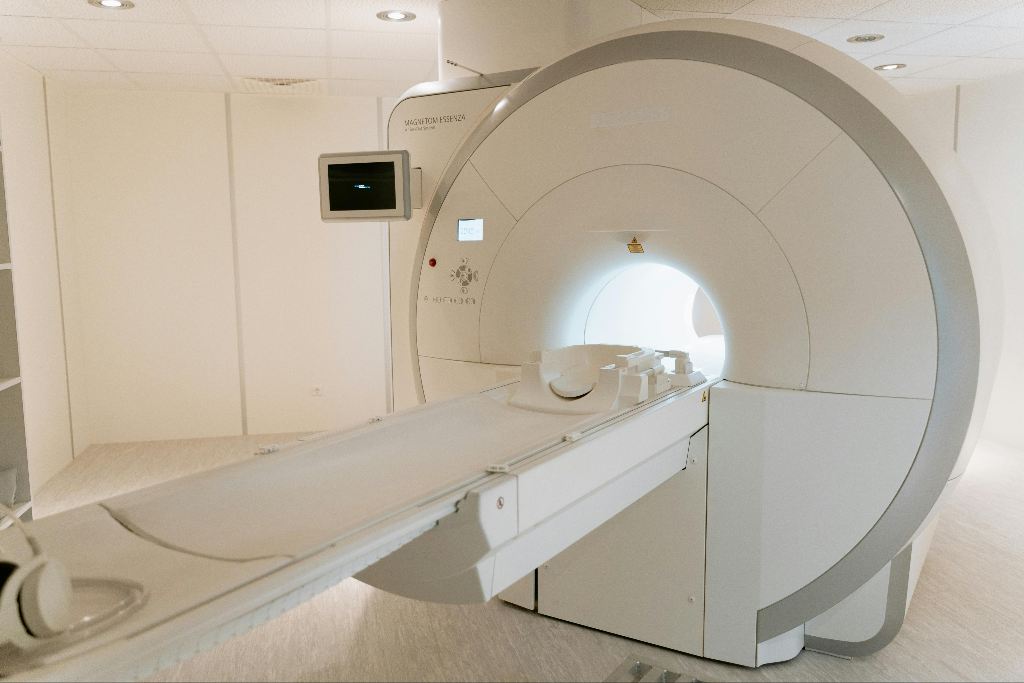Have you ever experienced lower back pain that led to one side of your body tingling or feeling numb? If so, you may have experienced a type of pain known as sciatica. Sciatica refers to pain that occurs when the sciatic nerve is pinched, which leads to pain radiating out from the lower back and down one side of the body. Sciatica can result from a car accident or other injury to the lower back which causes significant swelling to press on the sciatic nerve, or a herniated disc that may also compress the nerve. In order to determine how the sciatica pain is occurring, your doctor will need to use state-of-the-art diagnostic imaging tools to view the area.
Sciatica Symptoms
In addition to tingling and numbness, sciatica pain can also include a burning sensation along the lower back and leg. Other common symptoms include a consistent, strong pain in the lower back and rear, with strong pain associated with sitting down or standing up. You may also notice difficulty in moving one leg or foot without experiencing pain or tingling. More severe symptoms can include extreme pain that affects your mobility after a traumatic injury to the lower back, such as a car accident and difficulty controlling the bladder and bowel movements.
Diagnosing Sciatica
Because sciatica can present with a variety of symptoms and from many different causes, it is important to discuss your symptoms in detail with your doctor. Your doctor will likely first do a physical exam of the area as well to identify any pressure points or significant areas of concern. When the sciatic nerve is pinched, your lower back, thigh, leg, and foot can all be affected by a pain that can be a mild discomfort or can impair your ability to sit or stand.
Diagnostic Imaging for Sciatica
A doctor’s office providing comprehensive care will offer a wide variety of advanced diagnostic imaging technologies and radiology to help diagnose their patients, provide quality treatment, and monitor progress toward healing.
X-Ray
An X-ray shows your doctor a picture of your spine and can help pinpoint an injury that occurs along the bone. This can also be useful in identifying all parts of the spine that may be affected by the injury. X-rays can also help your doctor identify any spinal fractures, disc problems, and bone infections. An added benefit of an X-ray is that the results are immediate, so doctors can review the results right away and begin to address your symptoms, especially in severe cases of pain and discomfort.
MRI
An MRI, or Magnetic Resonance Imaging, is a detailed 3D scan of both the spine and soft tissues to help identify how the nerve may be pinched, like with a herniated disc. MRIs can also help identify any issues of arthritis that may be contributing to sciatica pain. This is a more non-invasive approach to diagnostic imaging because it does not use any radiation but still provides your doctor with a detailed look at spine, musculature, tendons, ligaments, organs, blood flow, and more.
CT scan
A CT scan can help give your doctor a clearer picture of the affected area, especially when utilizing a contrasting dye that helps increase the quality of the image, called a myelograph. A CT is like multiple X-rays of various angles of the injury, providing a 3D look at the affected area.
Electromyography
Electromyography, also referred to as EMG, is a diagnostic test that is used on muscles and nerves to test their responsiveness and sensitivity. This sends a signal through the sciatic nerve and allows the doctor to observe how the muscles and surrounding tissues respond.
Treatment and Recovery
Upon diagnosis of sciatica, your doctor will develop a treatment plan to address your specific pain points in order to help get you back to a pain-free lifestyle. Noninvasive treatments can include medication, physical therapy, and chiropractic care. If necessary, your doctor may also recommend steroid injections or even surgery. A chiropractor can gently manipulate the spine to help realign the spine to its natural position, reduce pressure on the sciatic nerve, and restore healthy flow and communication with the spine and nerves to promote internal healing.
The AICA Experience
At AICA Orthopedics, we offer a unique approach to your treatment plan by providing you with an individualized treatment plan with a multi-specialty team of doctors all located in one place for your convenience. The doctors at AICA include orthopedic specialists, physical therapists, chiropractors, neurologists, and surgeons all trained and specializing in addressing your pain and getting you back on your feet.





